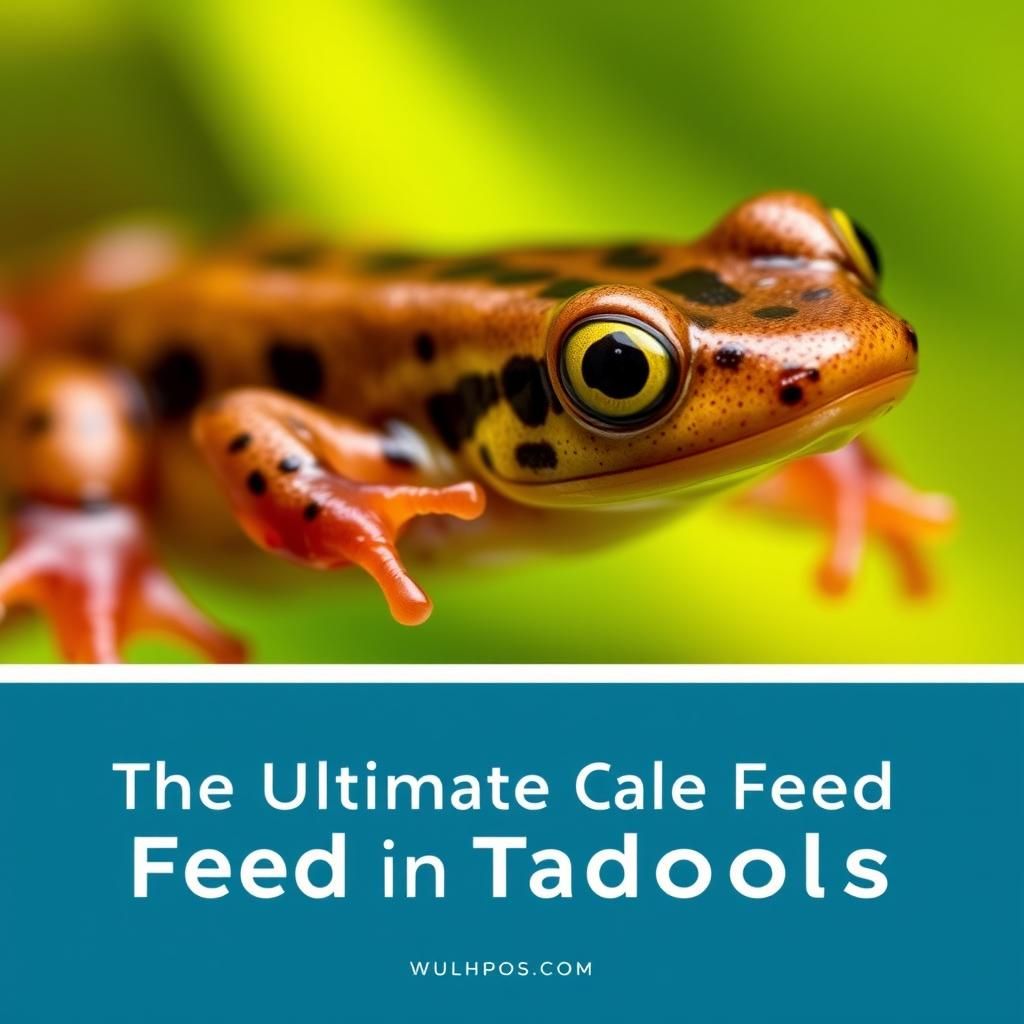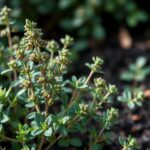The Ultimate Guide on What to Feed Tadpoles in Australia for Healthy Growth

Tadpoles are a fascinating stage in the life cycle of frogs and toads, showcasing remarkable growth and transformation. In Australia, providing the right nutrition is essential for their healthy development. This ultimate guide will delve into the best feeding practices for tadpoles, highlighting the types of food that promote optimal growth and well-being. From natural food sources to commercially available options, we will cover everything you need to know to ensure your tadpoles thrive. Whether you are a beginner or have some experience, understanding the dietary needs of these aquatic creatures is crucial for their successful metamorphosis into adult amphibians.
Feeding Tadpoles in Australia
Tadpoles in Australia typically require a varied diet to ensure healthy growth and development. While they primarily feed on algae in their early stages, it is essential to supplement their diet with other nutrient-rich foods. Commercial tadpole pellets and a variety of blanched vegetables such as spinach, zucchini, and lettuce can provide the necessary vitamins and minerals. Additionally, finely crushed fish flakes or even powdered spirulina can benefit their growth. It's crucial to avoid overfeeding and to remove uneaten food promptly to maintain clean water conditions, as a dirty environment can lead to disease and stunted growth.
Types of Food for Tadpoles
Tadpoles are omnivorous and can thrive on a range of food options. They usually start with algae, which provides a natural source of nutrients. As they grow, they can also feed on specially formulated tadpole pellets that are designed to meet their dietary needs. For variety, feeding them soft, blanched vegetables like peas, carrots, or leafy greens can enhance their nutrient intake. Introducing these different food sources can promote faster growth and overall health.
How Often to Feed Tadpoles
Feeding frequency is essential in ensuring that tadpoles develop appropriately. Young tadpoles should be fed small amounts two to three times a day. As they grow older and their appetite increases, they may require more food. However, it's vital to monitor their feeding closely; if uneaten food settles at the bottom, it could indicate overfeeding. Maintaining a balanced feeding schedule helps in keeping the water clean and the tadpoles healthy.
Water Quality and Feeding
Water quality plays a critical role in the health of tadpoles as they consume their food. It's essential to change a portion of the water regularly to prevent the buildup of toxins and bacteria, which can be harmful. Clean water will not only support the tadpoles’ feeding habits but also enhance their ability to digest and absorb nutrients. Testing the water regularly for pH levels and ammonia content can help ensure that the environment remains suitable for growth.
See also:
Best Vegetables for Tadpoles
Using fresh vegetables as part of a tadpole's diet can be very beneficial. Some of the best options include spinach, zucchini, and peas. These vegetables can be blanched to soften them, making it easier for tadpoles to consume. Cut them into small pieces to prevent choking. Including a variety of vegetables not only adds to the nutritional balance of their diet but can also make feeding time more stimulating and enjoyable for the tadpoles.
Signs of Malnutrition in Tadpoles
It’s essential to be observant about the health of tadpoles as signs of malnutrition can sometimes be subtle. Indicators may include stunted growth, lethargy, and poor water quality. If tadpoles are not eating vigorously or are less active than usual, they may not be getting enough nutrients. Ensuring they have a balanced diet and addressing any water quality issues can help prevent these problems and promote vigorous growth.
| Food Type | Nutritional Benefits |
|---|---|
| Algae | Natural source of essential nutrients |
| Tadpole Pellets | Designed for optimal growth and health |
| Blanched Vegetables | Rich in vitamins and minerals |
| Fish Flakes | Adds protein to their diet |
| Spirulina Powder | Excellent source of antioxidants |
Understanding the Nutritional Needs of Australian Tadpoles
Tadpoles require a balanced diet to ensure their healthy growth and development. In Australia, the native tadpole species thrive on a variety of food sources that mimic their natural environment. Providing the right nutrients, such as protein, carbohydrates, and vitamins, is crucial during their metamorphosis stage. It is essential to observe their dietary habits and adjust the feed accordingly, prioritizing fresh, organic options whenever possible to promote optimal health. Ensure that the feeding regimen matches their size and developmental stage, as this will lead to robust adult frogs.
The Importance of Protein in Tadpole Diet
Protein plays a vital role in the growth and development of tadpoles. As they transition from larval to adult stages, an adequate supply of protein-rich foods is crucial for muscle development and tissue regeneration. Common protein sources for tadpoles include daphnia, brine shrimp, and finely crushed fish flakes. These protein sources not only aid in physical growth but also enhance their immune systems, making them more resilient against diseases.
How to Create a Balanced Diet for Tadpoles
A balanced diet for tadpoles includes an array of food types to ensure they receive all necessary nutrients. This can entail a mix of herbivorous and carnivorous diets, depending on the species. Tadpoles often start with vegetation like algae and then progress to protein sources that are suitable for their developmental stage. Incorporating a variety of commercial tadpole food can also help in meeting their dietary requirements while preventing nutritional deficiencies.
See also:
Feeding Frequency and Portion Size
Determining the right feeding frequency and portion size is essential for the healthy growth of tadpoles. Generally, it is advisable to feed them small amounts two to three times a day. Overfeeding can lead to water contamination, which may harm the tadpoles. A good practice is to observe how quickly they consume their food and adjust portions to ensure they finish it without leftovers. Proper management will help in maintaining water quality and enhancing their growth rates.
Understanding Environmental Influences on Diet
The environmental factors in which tadpoles grow can significantly affect their diet. Temperature, water clarity, and the availability of natural food sources like algae and microorganisms play crucial roles in what tadpoles can access. In warmer climates, for instance, algae proliferate, providing a rich food source, while in clearer waters, natural insect larvae may be more available. Understanding these environmental impacts will help in optimizing their diet accordingly.
Common Dietary Mistakes to Avoid
When feeding tadpoles, there are several common dietary mistakes that should be avoided. Over-reliance on low-quality fish food can lead to malnutrition, as it often lacks essential nutrients. Feeding bread or processed human foods can also be detrimental, as these items do not provide the necessary dietary components for healthy growth. It’s crucial to educate oneself on the specific nutritional needs of the tadpole species being raised to mitigate these risks effectively.
Questions from Our Readers
What is the best food for tadpoles in Australia?
Tadpoles in Australia thrive on a diet rich in algae, vegetation, and commercial fish food. You can provide them with blanched lettuce, spinach, or specially designed tadpole pellets to ensure proper nutrition and growth.
Can I feed tadpoles fish food?
Yes, you can feed tadpoles fish food, particularly pellets or flakes that are specifically formulated for herbivorous fish. However, it's crucial to ensure that the food is high in protein and low in fat to support their growth efficiently.
See also:
How often should I feed tadpoles?
Tadpoles should be fed around once a day, but it's essential to monitor how much they consume. You should provide them with enough food to be eaten within 10-15 minutes to prevent water pollution and maintain a clean environment.
Are there any foods I should avoid giving to tadpoles?
It's best to avoid feeding tadpoles processed foods or human food that is high in sugar or fat, such as bread or processed meats. Additionally, feeding them dairy products can be harmful, so stick to natural plant-based options and specialized tadpole food.

If you want to read more articles like The Ultimate Guide on What to Feed Tadpoles in Australia for Healthy Growth, we recommend you check out our Gardeners category.
Leave a Reply
Related Articles